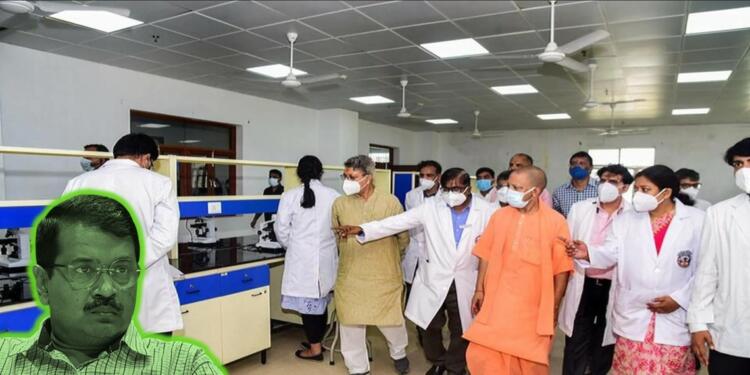Reportedly, Uttar Pradesh, the most populous state of the country has become the state with the maximum number of medical colleges in the country and is currently leading the charge in revolutionising the higher education sector. However, the reader won’t hear a peep about it in the mainstream or national media. Chief Minister Yogi Adityanath reflected upon the achievement and remarked, “During 1947 to 2017, only 12 medical colleges were constructed in the state, however between 2017 to 2022, under the PM Swasthya Yojna and from the resources of the state government, 33 new medical colleges have been constructed. Of these, 17 have been made operational and work is in progress in the remaining 16.”
Using the PPP model to develop new medical institutes and hospital
Yogi Adityanath was speaking at a programme for concession agreement transfer between the UP medical education department and private organisations for the establishment of medical colleges on the public-private-partnership (PPP) model in Uttar Pradesh. He signed a Memorandum of Understanding (MoU) for setting up medical colleges in Maharajganj and Bareilly districts based on the aforementioned PPP model.
The BJP CM further said that 330-bed hospitals will be set up in two districts on PPP mode. “Both the organisations with which the MoUs have been signed today, have experience in their respective fields. They should work in a time-bound manner so that the admissions can be started in these two medical colleges from 2024,”
Increase in MBBS seats and starting of new AIIMS
It is pertinent to note that the seats in the MBBS course have increased from 4,450 to 8,378 during Yogi’s rule in the state. Moreover, there are 1,300 seats for postgraduate courses in government medical colleges and 1,700 seats in private medical colleges. Two AIIMs have already been set up.
And the direct benefit of strengthening medical infrastructure has been the way state government responded in the face of adversity. During the second wave of the pandemic when states like Maharashtra and Kerala were reporting astronomical numbers and feeble testing figures, Uttar Pradesh stood out from the rest of the pack. The state kept the case number in check, all whilst setting new records in Covid testing.
Read More: To deal with Covid-19 crisis, Yogi Adityanath decides to rope in retired doctors, paramedical staff
Improving medical infrastructure helps UP brave dire conditions
Before Yogi took the charge, UP’s health infrastructure was widely ridiculed as hundreds of lives were claimed every year due to Acute Encephalitis Syndrome (AES). However, after assuming charge in 2017, the Yogi government launched a massive ‘door to door’ DASTAK campaign against AES and Japanese Encephalitis (JE) in order to wipe out deadly diseases from the state.
DASTAK campaign was part of the Social and Behavioural Change Communication (SBCC) strategy incorporated by the Yogi government to completely eradicate encephalitis. As part of the campaign, the government along with UNICEF went door to door in 38 districts that were affected by the AES and Japanese Encephalitis.
According to reports, between 2005 and 2018, 47,509 AES cases were reported in Uttar Pradesh, which led to the death of 8,373 patients. However, by 2020, the deaths of AES patients in hospital had dipped to 57 and to 5 in case of JE – suggesting Yogi had managed to turn the corner.
Read More: Why Nitish Kumar should take the help of Yogi government to tackle the encephalitis menace
आजादी के बाद कुछ पार्टियों ने अल्पसंख्यकों, अनुसूचित जाति व जनजाति वर्ग के लोगों व उनके बच्चों को सिर्फ वोट बैंक बनाकर रख दिया था।
वर्ष 1977 से 2017 तक हर वर्ष इन्हीं वर्गों के 1500 से 2000 बच्चे इंसेफेलाइटिस के शिकार होते थे, लेकिन किसी ने ध्यान नहीं दिया था।
— Yogi Adityanath (मोदी का परिवार) (@myogiadityanath) October 6, 2021
Yogi is leading a silent revolution in the medical education field. And unlike some advertisement driven governments, he is letting his work make the noise.





























